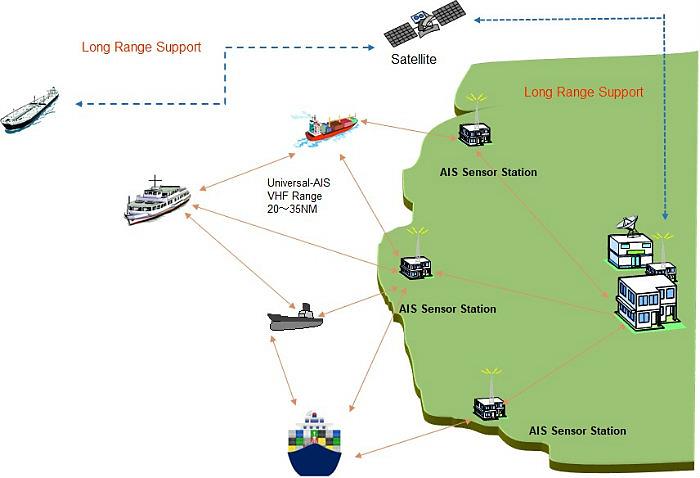Mitigating the Risk of Ship Accidents with an Integrated Approach to Maritime Safety Management
Main Article Content
Abstract
This research explores an integrated approach in maritime safety management to reduce the risk of ship accidents. With the increasing volume of maritime traffic and the complexity of shipping operations, ship safety has become a critical aspect that must be considered. This study identifies and analyzes various safety technologies and strategies that have been implemented in the maritime industry, such as Automatic Identification Systems (AIS), Vessel Traffic Management (VTS), Weather Early Warning Systems, and crew training and certification programs. Data collected through literature reviews and case studies show that the application of this advanced technology significantly improves shipping safety and reduces accident incidents.
Downloads
Article Details

This work is licensed under a Creative Commons Attribution 4.0 International License.
References
K. X. Li and J. Wonham, "Maritime legislation: new areas for safety of life at sea," Maritime Policy & Management, vol. 28, no. 3, pp. 225-234, 2001.
H. L. Hansen, L. H. Laursen, M. Frydberg, and S. Kristensen, "Major differences in rates of occupational accidents between different nationalities of seafarers," International Maritime Health, vol. 59, no. 1-4, pp. 7-18, 2008.
E. Eliopoulou, A. Papanikolaou, and M. Voulgarellis, "Statistical analysis of ship accidents and review of safety level," Safety Science, vol. 85, pp. 282-292, 2016.
M. Lützhöft, A. Dahlgren, A. Kircher, B. Thorslund, and M. Gillberg, "Fatigue at sea in Swedish shipping—a field study," American Journal of Industrial Medicine, vol. 53, no. 7, pp. 733-740, 2010.
M. Celik and S. Cebi, "Analytical HFACS for investigating human errors in shipping accidents," Accident Analysis & Prevention, vol. 41, no. 1, pp. 66-75, 2009.
J. Lappalainen, A. Vepsäläinen, K. Salmi, and U. Tapaninen, "Incident reporting in Finnish shipping companies," WMU Journal of Maritime Affairs, vol. 10, no. 2, pp. 167-181, 2011.
F. J. Ravira and J. Piniella, "Evaluating the impact of PSC inspectors' professional profile: a case study of the Spanish Maritime Administration," WMU Journal of Maritime Affairs, vol. 15, no. 2, pp. 221-236, 2016.
A. M. Rothblum, "Human error and marine safety," in National Safety Council Congress and Expo, Orlando, FL, 2000, pp. 7-20.
S. J. Nadel, L. C. Smith, and R. R. Murphy, "Autonomous navigation and obstacle avoidance for unmanned surface vehicles using real-time color stereo vision," in OCEANS 2019 MTS/IEEE Seattle, Seattle, WA, USA, 2019, pp. 1-8
B. M. Batalden and A. K. Sydnes, "Maritime safety and the ISM code: a study of investigated casualties and incidents," WMU Journal of Maritime Affairs, vol. 13, no. 1, pp. 3-25, 2014
J. U. Schröder-Hinrichs, E. Hollnagel, and M. Baldauf, "From Titanic to Costa Concordia—a century of lessons not learned," WMU Journal of Maritime Affairs, vol. 11, no. 2, pp. 151-167, 2012
M. S. Özdemir and M. Celik, "Considering sustainability in the maritime industry: a systems approach to qualitative risk assessment," Sustainability, vol. 13, no. 12, p. 6611, 2021
T. E. Eriksen, E. I. Høye, B. Narvåez, and T. Meling, "Maritime safety culture and safety behaviours in Greece and Norway: comparing professional seafarers and private leisure boat users," Safety, vol. 4, no. 3, p. 34, 2018
K. Mitroussi, "Quality in shipping: IMO's role and problems of implementation," Disaster Prevention and Management, vol. 13, no. 1, pp. 50-58, 2004
A. Fadillah and F. Maulana, “Analysis Of The Application Of Renewable Energy At The Muara Angke Passenger Port As A Means Of Supporting Thousand Island Tourism”, zonalaut, vol. 5, no. 1, pp. 7-14, Mar. 2024.
N. Muammar dan A. Mosyofa, “KEBIJAKAN MARITIM INDONESIA DALAM MENUNJANG SISTEM KEAMANAN TRANSPORTASI LAUT”, SENSISTEK, vol. 7, no. 1, hlm. 46-50, Mei 2024.

